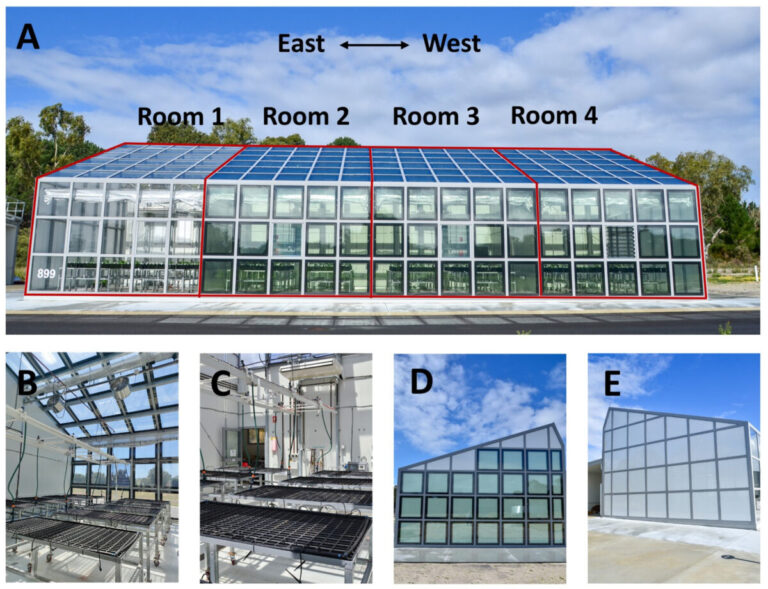Developed by a research team, including experts from the Australian specialist Clearvue, the new PV windows could also reduce water consumption in a greenhouse by 29%. The group is of the opinion that a fully glazed solar greenhouse up to 100% of energy consumption at worldwide locations could compensate with the help of adaptable and efficient temperature control techniques.
Researchers from Murdoch University and Clearvue Technologies from Australia have developed new solar windows that are said to reduce energy consumption and water consumption in greenhouses.
To test the proposed innovation, they designed and built a greenhouse with PV windows with a high transparency on the roof and the walls. For two growth seasons, they measured the yield of 18 different crops that grew in that greenhouse, together with electricity production and water consumption.
“Solar greenhouses with photovoltaic modules with high transparentation mounted on the roof use part of the prisoners of sunlight to generate electricity through the solar cells, while the remaining sunlight continues in the greenhouse for plant growth and food production,” the team explained. “However, at the current stage there is no practical implementation of a fully operational solar greenhouse to assess the actual energy consumption, power generation capacities and the potential of crop production.”
The greenhouse on research scale was built in Perth, Western Australia. It consisted of four rooms, each 8 m long and 6 m wide. Room 1 was glazed with conventional layer-iron, ultra-clear glass, while rooms 2, 3 and 4 used solar glasses.
Two types of polyvinylbutyral (PVB) designs were used, including PVB-1, a lower doping concentration for windows with higher clarity and PVB-2, with a slightly higher luminescence. The solar glass in room 2 used two PVB-2 interlayers; In room 3, a combination of PVB-1 and PVB-2 was used, while room 4 used a single PVB-1 interlayer combined with a normal PVB interlayer.
“Clearvue technologies developed a PV gloss product with a high transparency, designed by the innovative application of advanced glazing using fluorescent concentrator panels, spectral selective thin-film coatings and tailor-made silicions, the academic modules,” added Direct visible light transmission (VLT) of approximately 60% and total (direct plus diffuse) VLT of approximately 70%, with a power conversion -efficiency of approximately 3.3% and electrical power of 30-33 Wp/m2.
Image: Murdoch University, Cleaner Engineering and Technology, CC by 4.0
A total of 153 clear solar windows were installed in the greenhouse. They were able to power the fans, air conditioners, shades and ventilation souvers. Surplus PV-generated energy was also exported to the electricity grid. At night the cash operation relied on electricity from the grid. The growing season 1 was from July to December 2021 and the growing season 2 was from March to September 2022.
“The crops include horticultural crops that are usually produced in kas agriculture and wide crops. Strawberry, lettuce, tomato, dwarf bean, spinach, mustard, basil, snowwt, chili and peppers were selected for this study because of their common use in commercial kasland construction, “the academics explained. “On the other hand, wheat, barley, canola, lupine, chickpeas, ginger, sunflower and sweet corn were absorbed because they are wide crops or are economically important. Although these crops are usually not grown commercially in greenhouses, they are cultivated on a large scale for research purposes, in particular in breeding programs. “
According to the results, the new structure (rooms 2-4) reduced energy consumption by 57% and water consumption by 29%, compared to room 1. Common horticultural crops, such as tomato, dwarf bean, chickpeas, lettuce, spinach mustard, and bell pepper, maintained the same yield level in the solar room as in the conventional room. At the same time, Snow Peas had a revenue of 12% in the solar rooms. Broadacre crops experienced a remarkable decline of biomass and yield or failed to grow up when they are grown in solar rooms.
After these results, the team Numerically simulated the same structure at different locations worldwide. Namely, they placed it in Rio de Janeiro, Brazil; Beijing, China; New Delhi, India; Los Angeles, California, United States; New York City, New York, United States; Haifa, Israel; And Paris, France.
“A computer model showed that a fully glazed solar greenhouse has the potential to compensate for up to 100% of energy consumption in global locations with the help of adjustable and efficient temperature control techniques, making it possible to be fully self-sufficient greenhouse land on a global scale,” said it team.
The findings were presented in “Transparent solar photo-ontaic windows offer strong potential for the production of self-sufficient food production in future-oriented greenhouse agricultural architectures“Presented in Cleaner engineering and technology.
This content is protected by copyright and may not be reused. If you want to work with us and reuse part of our content, please contact: editors@pv-magazine.com.
Popular content



